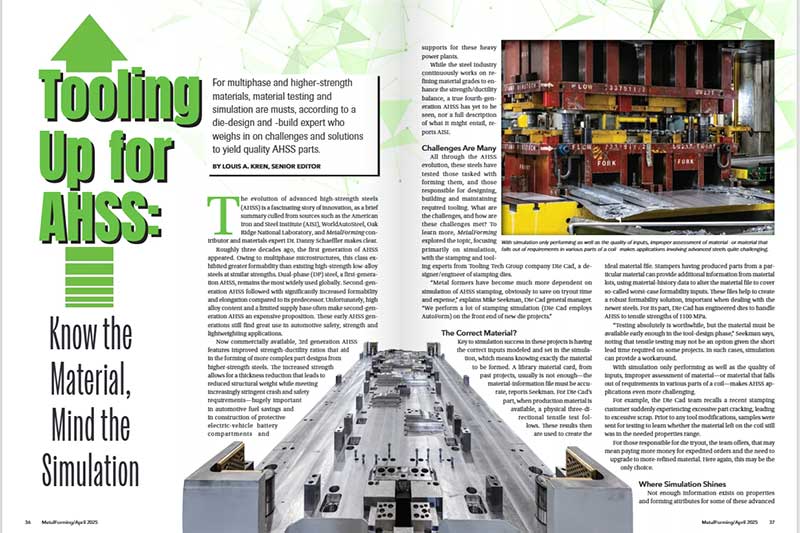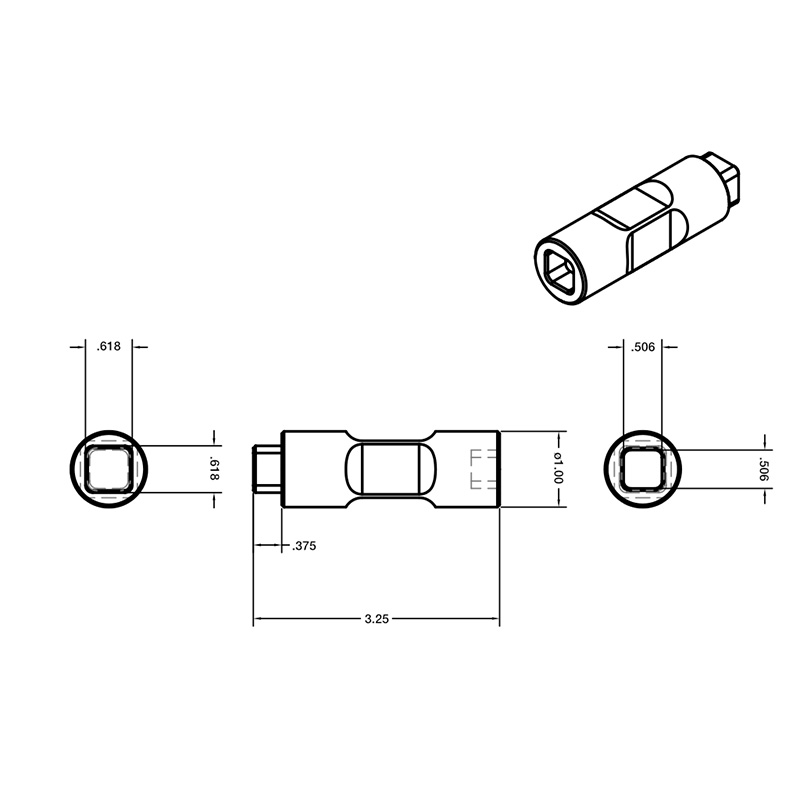
0
You have 0 items in your cart
- Home
- Tooling & Automation
- Companies & Capabilities
- Segen Quick Change
- News
- Resources
- About Us
- Contact Us
For multiphase and higher-MPa materials, material testing and simulation are musts, according to die-design and -build experts who weigh in on challenges and solutions to yield quality AHSS parts.
BY LOUIS A. KREN, SENIOR EDITOR
The evolution of advanced high-strength steels (AHSS) is a fascinating story of innovation, as a brief summary culled from sources such as the American Iron and Steel Institute (AISI), WorldAutoSteel, Oak Ridge National Laboratory, and MetalForming contributor and materials expert Dr. Danny Schaeffler makes clear.
Roughly three decades ago, the first generation of AHSS appeared. Owing to multiphase microstructures, this class exhibited greater formability than existing high-strength low-alloy steels at similar strengths. Dual-phase (DP) steel, a first-generation AHSS, remains the most widely used globally. Second-generation AHSS followed with significantly increased formability and elongation as compared to its predecessor.
Unfortunately, high alloy content and a limited supply base often makes second-generation AHSS an expensive proposition. These early AHSS generations still find great use in automotive safety, strength and lightweighting applications.
Now commercially available, 3rd generation AHSS features improved strength-ductility ratios that aid in the forming of more complex part designs from higher-strength steels. The increased strength allows for a thickness reduction that leads to reduced structural weight while meeting increasingly stringent crash and safety requirements—hugely important in automotive fuel savings and in construction of protective electric-vehicle battery compartments and supports for these heavy power plants.
While the steel industry continuously works on refining material grades to enhance the strength/ductility balance, we have yet to see true fourth-generation AHSS, nor a full description of what it might entail, reports AISI.”

Fill out the form for more information and we will get back to you.
Request a Quote


